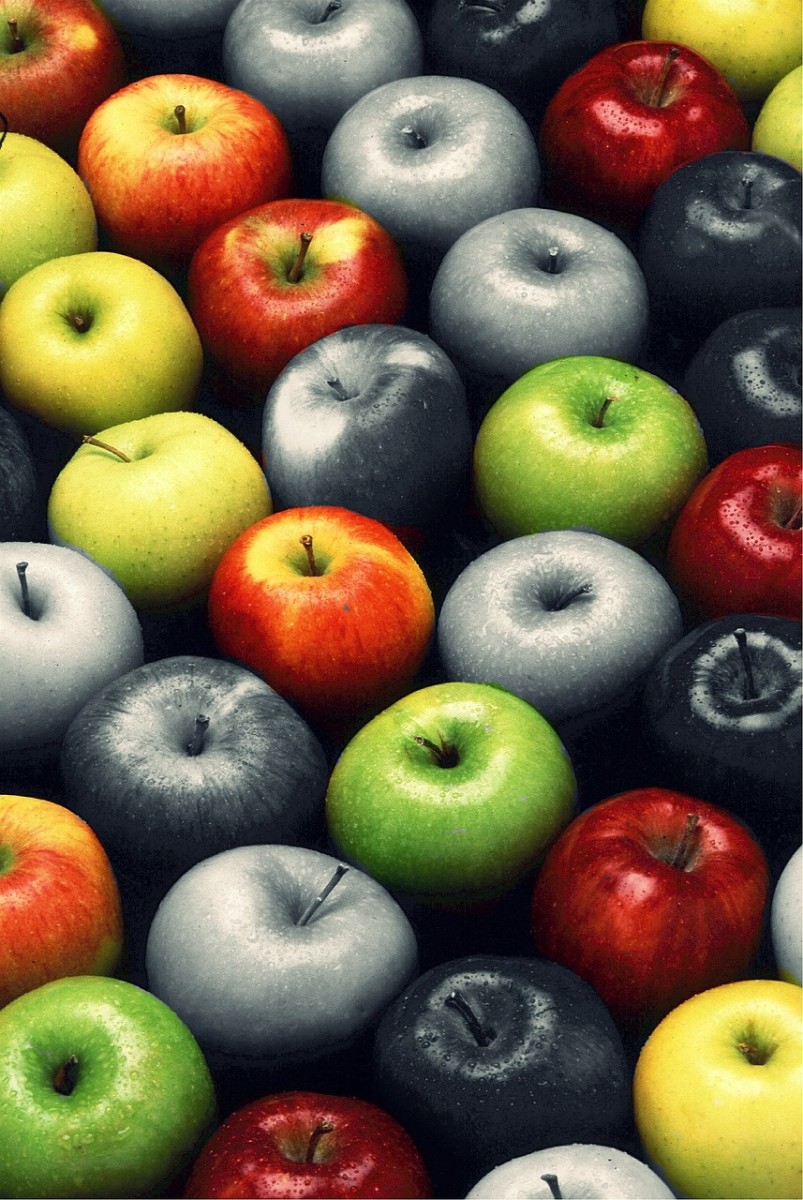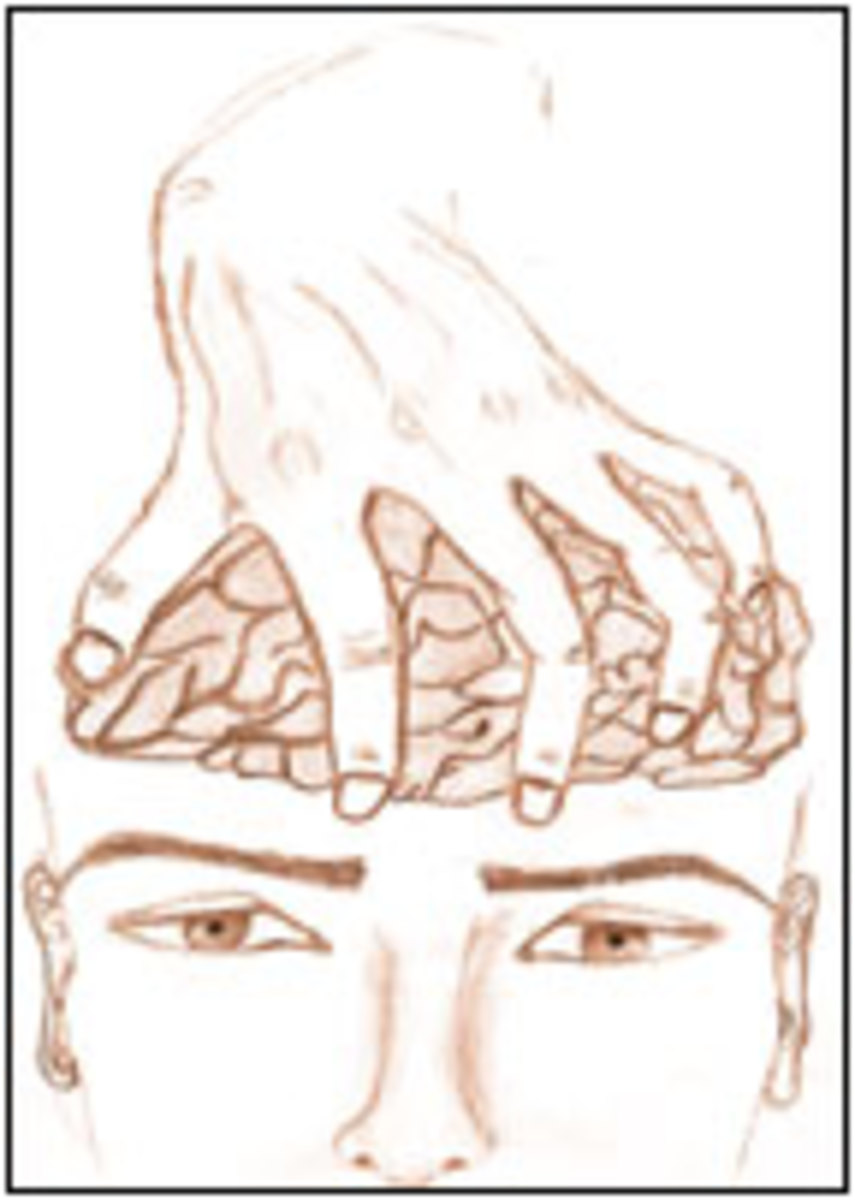GM Food: Golden Rice
Waiter, there’s a gene in my food
The world of genetically modified organisms, particularly crops, is an ever changing and fast evolving industry that has the potential to revolutionize the way we eat and from where we get nutrients. This brave new world has the capacity to end world hunger and save tens of millions of lives. However, global corporations threaten to jeopardize this noble cause in favour of establishing a monopoly and stranglehold on the industry; through intellectual property laws and conflicts of interest in overviewing bodies such as the CSIRO, to their own malevolent gain (Greenpeace, 2011).
Moreover, several more questions about the safety of genetically modified foods, and their social, ethical, environmental and economic implications, need to be considered. As Australia’s chief scientist, it is the purpose of article to highlight such issues and consider their appropriateness for the Australia government to allow them into the country.
The descriptor “genetically modified foods or organism”, oft abbreviated to GM food, is employed to describe crop plants, intended for human and animal consumption, that have been modified, altered or created, using molecular biology techniques (Holmes, 2010). These plants are altered in laboratories in an attempt to enrich certain desired traits, often increased environmental resistance or enhanced nutritional content (Holmes, 2010). However, there has been much criticism of such techniques, mainly consisting of concerns for safety, ecological impact, economic impact, and the most concerning factor, that organisms modified genetically are subject to intellectual property law, copyright and claims (Holmes, 2010).It is the purpose of this article to highlight the science and issues surrounding genetically engineered crops, specifically Golden Rice; a variety of Oryza sativa rice (Beyer, 2000).
Modifying a species to suit humanities needs was once a time consuming and fairly inaccurate process, namely selective breeding, however this has evolved to become a very accurate and expeditious science (Beyer, 2000). This can be illustrated in the example of a plant geneticist finding and isolating a certain gene that (for example) increases drought tolerance in one plant species, and then transferring it into another species (Lai, 2006). The aim of this is to augment this newly genetically modified plant with same drought hardiness (Lai, 2006). Furthermore, these genes transferred can be adapted from non-plant organisms as well, examples include the inclusion of Bacillus thuringiensis genes in wheat, corn and other crops (Lai, 2006). Bacillus thuringiensis is a naturally existing bacterium that manufactures crystal proteins which are toxic to insect larvae (Lai, 2006). These protein genes have been isolated and transferred into corn, facilitating the ‘natural’ production of its own pesticides to protect it from insects (Lai, 2006). One such genetically modified food is Golden Rice.
Why was Golden Rice developed?
The creation of Golden Rice was fostered by the need to help children who suffer from vitamin A deficiency (VAD) (Beyer, 2000). In 2000, an estimated 124 million people across 118, countries spread through the African continent and Southeast Asia, suffered from vitamin A deficiency (Beyer, 2000). “Each year, 1 - 2 million deaths, half a million cases of irreversible blindness and millions of cases of xerophthalmia occur due to a lack of sufficient vitamin A in much of the populations [of South East Asia and Africa] diet” (Beyer, 2000). In such harshly affected areas, rice is a staple food in most of the populations diet, therefore the logical step of increasing the amount of vitamin A in this food was taken (Beyer, 2000). A noble act intended to help millions of people indeed, but what potential future consequences could come from this genetically modified food?
Genetic modification, how does it work?
To understand how genetic modification of species takes place, an understanding of gene expression and protein synthesis needs to first be established. “DNA is the carrier of all the genetic information in any cell, and is comprised of thousands of genes” (Mehlin, et al, 2011). In each of these genes, there are biological instructions on how to manufacture a protein molecule (Mehlin, et al, 2011). Proteins perform roles such as repairing cells or acting as building blocks (Mehlin, et al, 2011). Indeed, the the information transcribed from the genes determines the protein composition, and thus the purpose of the cell (Mehlin, et al, 2011).
The DNA of a cell is located in it’s nucleus, and is arranged into chromosomes (Mehlin, et al, 2011). Since every cell must hold this genetic information, the DNA of the cell is duplicated [so that the daughter cell receives a copy] before it divides (Mehlin, et al, 2011). The DNA double helix comprises of two corresponding DNA strands, thereby, each strand acts as a blueprint or template for the construction of the new strand (Mehlin, et al, 2011). Normally, DNA is stored in chromatin, a compressed framework, and therefore needs to unwind the DNA and separate the two strands (Mehlin, et al, 2011). This task is assigned to initiator proteins, which attach themselves to the DNA at replication origins, typified by weak bonds between the DNA strands, and separate the strands (Mehlin, et al, 2011). The process of replication, is then started by another group of proteins, which include helicase, a protein that breaks the bonds between the DNA strands (Mehlin, et al, 2011). Once separated, an RNA primer is bonded is to the DNA by DNA primase, an enzyme, and this marks the beginning of new DNA chains (Mehlin, et al, 2011).
When proteins are needed, transcription occurs, and the equivalent genes are transcribed into RNA (Mehlin, et al, 2011). Following the instigation of transcription, RNA polymerase II moves along the aforementioned DNA template and “polymerizes ribonucleotides into an RNA copy of the gene” (Mehlin, et al, 2011). When the polymerase reaches the end of the gene, it falls off and transcription finishes (Mehlin, et al, 2011).
After this, the RNA has the non-coding sections of itself removed, before being transported outside of the nucleus, where translation occurs (Mehlin, et al, 2011). “Translation is the actual synthesis of a protein under the direction of mRNA” (Mehlin, et al, 2011). This process is characterised by the nucleotide sequence of an mRNA translating itself into an amino acid sequence of a protein (Mehlin, et al, 2011). Brought to the amino acids by tRNA, in this process, ribosome acts as a foundation and serves as catalyst for the coupling of amino acids into proteins, determined by the mRNA (Mehlin, et al, 2011). mRNA’s nucleotide sequence is comprised of four separate nucleotides, compared to a protein, which is formed by 20 amino acids (Mehlin, et al, 2011). “The nucleotide sequence is interpreted in codons, groups of three nucleotides” (Mehlin, et al, 2011). Each codon has an equivalent anticodon in tRNA, further compounded by the fact that each anticodon has a correlated amino acid, this is known by name ‘genetic code’ (Mehlin, et al, 2011). Therefore, translation can be separated into three specific phases. As Mehlin, 2011, states “The first, initiation, results in the formation of an initiation complex in which the ribosome is bound to the specific initiation (start) site on the mRNA while the initiator tRNA is annealed to the initiator codon and bound to the ribosome. The second stage, elongation, consists of joining amino acids to the growing polypeptide chain according to the sequence specified by the message. Incorporation of each amino acid occurs by the same mechanism. Thus, the same steps are repeated over and over again until the termination codon is reached in the message. The termination codon gives the signal for the third and last stage of protein synthesis, the termination, in which the ready-made protein is released from the ribosome” (Mehlin, et al, 2011).
Therefore, using this information as a foundation, the process by which genetic modification takes can be established. Firstly, the gene to be inserted in the organism must be selected and isolated, achieved through multiplying it using polymerase chain reaction (Mehlin, et al, 2011). Once this has been done, the isolated gene will be inserted into a bacterial plasmid, where it is often modified for better gene expression (Mehlin, et al, 2011). Also, this isolated gene would most probably contain a promoter and restriction enzyme as well as a selectable marker gene artificially added in order to enhance and control gene expression (Mehlin, et al, 2011). The modified gene, inside the bacterial plasmid would then be inserted into one of the target organisms cell specific to the nature of the desired gene expression, in an attempt to enable protein synthesis, as detailed above with the modified gene (Mehlin, et al, 2011).
What is Golden Rice, and how is it created?
Golden Rice has been created with the aim of producing significant amounts of β-carotene, a precursive form of vitamin A (Zhang, 2000). This was achieved by engineering the rice to express the relevant genes in the endosperm of the rice granule, the part which people eat (Zhang, 2000). Although rice plants synthesize β-carotene in vegetative tissues, this is a carotenoid pigment that resides in the leaves and is used during photosynthesis (Zhang, 2000). Therefore, this pigment is not produced in the endosperm, as photosynthesis does not occur in the endosperm (Zhang, 2000). Thereby only two steps of the biosynthetic pathway separate where the expression of photosynthesis occurs (Zhang, 2000). By genetically modifying the rice species through the addition of two genes, phytoene synthase and phytoene desaturase, the β-carotene accumulates in the edible endosperm (Zhang, 2000). The two genes used have been isolated from either maize or daffodil plants and Erwinia, a common soil bacterium (Zhang, 2000). When combined, these two genes combine to allow for lycopene to form in the endosperm, which is then converted by naturally occurring enzymes into β-carotene (Zhang, 2000). These genes were implemented into Golden Rice through the protein synthesis method as ascribed above, such methods in stark contrast to traditional farming methods and selective breeding (Zhang, 2000). Traditional techniques, which often involved selecting shorter stork species to breed (for better stability in wind and response to fertilizer), are done in paddy fields, arable land flooded for rice growing (Bale, 2001). Such techniques require a great of amount of labor and materials to establish and maintain a paddy field, and the use of water buffalo for ploughing and other tasks is vital (Bale, 2001). These techniques, which utilize selective breeding rather than artificial genetic modification, were and still remain a perfectly viable alternative in the past, present and future to genetically modified organisms such as Golden Rice, which requires the same amount of work as traditional rice, but as will discussed later, may prove harmful.
What could be the economic impacts of Golden Rice?
Studies of hypothetical scenarios of the implementation of Golden Rice into Asia, where rice is considered a staple of the diets of the majority of the populous, have been undertaken (Potrykus, 2001). These studies have indicated that there is the potential for unprecedented net economic gain, stemming from the plausible expectation that the incidence and mortality rate of vitamin A deficiency would significantly decrease (Potrykus, 2001). The economic benefits of overall better general public health and increased work productivity (Potrykus, 2001). Certainly, these health improvements may mean as much as an increase of US$16 - 88 million to the Philippine economy per year (Potrykus, 2001). Furthermore, annual net gains in countries such as China - US$6.3 billion, Indian - US$2.3 billion and the rest of South East Asia - US$4.1 billion are unprecedented gains (Potrykus, 2001). However, these gains could come at a significant price to the environment.
Biological and environmental issues surrounding recombinant DNA techniques
The issues surrounding recombinant DNA techniques are numerous, and for good reason, as no definitive long term studies have been conducted into the biological and environmental repercussions (Greenpeace, 2011). With recent examples of genetically modified crops including insect resistant varieties, there is a distinct possibility that the damage they cause through the eradication of biodiversity (such as the endangered monarch butterfly) will far outweigh the savings in lesser pesticide use (Greenpeace, 2011). Furthermore the implementation of insect resistant crops may be comparable to the over-prescription and use of antibiotics for minor infections, where unwittingly, ‘superbugs’ are created, that is, bacteria immune to the antibiotic (Greenpeace, 2011). In the case of crops, an increase in the use of pesticides could create “superweeds” and destroy crops and ruin fragile ecosystems, or, potentially linger on genetically modified crops and be unknowingly consumed (Greenpeace, 2011).
Additionally, genetically modified foods can spread through nature via pollen on bees and native plant species (Greenpeace, 2011). Four years after Mexico banned the growing of genetically modified crops, DNA from genetically modified maize has been found in wild maize, growing in remote and isolated mountain regions, over 62 miles from the nearest genetically modified crops in California (Greenpeace, 2011). Contamination incidents are becoming more and more widespread, and are difficult to recognize and stop (Greenpeace, 2011). With genetically modified crops interbreeding with natural species, the contamination will continue indefinitely for each future generation, presenting disastrous and uncontrollable future ramifications. It should be seen that this genetic pollution could potentially result in the wiping out of all natural occurring crop species, especially in third world countries and carries extreme risks and consequences (FDA, 2011).
Finally, the risk for new allergens to develop is highly apparent (FDA, 2011). Increasingly today, it seems more and more children are being diagnosed with allergies to peanuts, shellfish and other foods (FDA, 2011). There is a chance that by introducing a new gene into a plant that a previously unknown allergen may be indadvertedly created (FDA, 2011). For example, there was a project involving the removal of a gene from Brazil nuts and inserting it into a type of soybean (Nordlee, 1996). However after skin-prick testing this new transgenic species on four test subjects, each one developed a reaction (Nordlee, 1996).
Who are Monsanto, and why you should be concerned
Monsanto is a multinational agricultural biotechnology company which is based in the United States (USSEC, 2011). Since the 1940s, Monsanto has been one of the United State’s largest chemical companies; it is the world’s leading producer of the herbicide glyphosate [Roundup], as well as providing and developing 90% of the world’s genetically modified food (USSEC, 2011). As an interesting side-note, Monsanto was the company responsible for the development and manufacture of the herbicide Agent Orange, used as a defoliant in Vietnam during the Vietnam War, and was soon found to contain the highly carcinogenic dioxin, which causes horrid mutations and deformities in humans. Vietnam today continues to be plagued by this abhorrent residue. Perhaps a company with such a track record should not be trusted with such power on a technology that could affect hundreds of millions of people? Monsanto has been identified by the United States Environmental Protection Agency as contaminating 56 environmental sites in the United States (EPA, 2011). Monsanto has been sued repeatedly by former employees and residents of contaminated sites for poisoning and polluting them (EPA, 2011). Monsanto spends millions of dollars every year paying lobbyists, and interestingly enough, one of these former lobbyists has been appointed a senior adviser to the United States Food and Drug Administration (FDA) (Greenpeace, 2011). Furthermore, judges, medical doctors, a former Secretary of Defense, commissioners and assistants of the FDA and administrators of the Environmental Protection Agency have been employees of Monsanto, serving various high ranking roles such as Vice President, Chairman, CEO and attorney (Greenpeace, 2011). In Australia alone, out of the 54 applications submitted to FSANZ pertaining to genetically modified foods, 27 are from Monsanto (Greenpeace, 2011). In Australia, two senior advisors in the CSIRO, the board which decides the status of genetically modified crops, are directors of biological engineering companies with interests in the area, and are in commercial partnership with Monsanto (Greenpeace, 2011). This surely must be a major conflict of interest, and should be a concern to the public. Monsanto own 90% of the technology and relevant intellectual property rights associated with genetically modified crops, and this begs the question; surely this is a breach of ethics when this one company has a monopolized stranglehold on the industry? Such future ramifications could involve companies like Monsanto using their tactical advantage to pressure government bodies to approve unsafe or untested genetically modified organisms or charging astronomical prices on organisms such as Golden Rice, which could potentially mean the greed of a few determining who lives and who goes blind in the third world. This needs to be considered when looking at implementing such a technology in Australia, which would effectively herald a beginning reliance on a product that companies like Monsanto need in order to advance their own financial goals.
Potential implementation of Golden Rice in Australia in the future and recommendations
Potentially introducing Golden Rice into Australia could prove disastrous, as the revenue generated from exporting Australian rice is to 1 billion dollars (RGA, 2011). As explained previously, the potential for biological mishaps including the cross breeding of rice species and emergence of Gold Rice as a dominant species could significantly jeopardize Australia’s export market. Moreover, communities that would benefit from the future of Golden Rice in Australia itself, would be limited. Perhaps some
Aboriginal communities, where health is an issue, may receive some benefit. However, the country’s extremely well functioning healthcare system and readily available nutrient sources, combined with many Aboriginal communities being located in rural areas unsuitable for growing rice remain firm reminders that any benefits from allowing Golden Rice into the country would be small and probably negligible.
The social and ethical implications of patenting genetically modified organisms could lead to life, itself, becoming some sort of commercial entity through intellectual property laws and patenting. What if in the future millions of people rely on a genetically modified food and the company that owns it decides it wants more money and increases the price, putting this essential technology out of reach for the people it was allegedly created to help? All too often, the claims made in support of genetically modified food are along the lines of “it’s critical in ending the world’s food calamity.” However, genetically modified food in no way has increased food security for the planet’s poor. Indeed, most genetically modified food is never destined for the third world, rather, it’s used for animal feed, biofuel or to manufacture highly processed food products, intended for consumption in Western countries.
Notwithstanding, genetically modified foods, particularly Golden Rice, have huge “potential”, to improve the lives of millions if used for the common social good, rather than for profit, which as has been shown, may prove difficult. It is therefore my recommendation to the Australian government, as Australia’s chief scientist, that much more extensive research is conducted into long term studies of the health and environmental implications genetically modified foods, and the legal grey areas surrounding intellectual property laws surround such technology be regulated, lest faceless corporations such as Monsanto further establish their monopoly. The lack of benefits for implementing this technology in Australia, and the numerous ethical, social and health concerns for future consideration, are too great for the Australian government to be in favour of allowing Golden Rice into the country.
Bibliography
"Brazil Sets New Record in the Adoption of Transgenic Crops." PR Newswire 3 Aug. 2011: 1. Print.
Brunk, Conrad G.. Acceptable genes?: religious traditions and genetically modified foods. Albany, N.Y.: SUNY Press, 2009. Print.
Buttel, Frederick H., and Robert M. Goodman. Of frankenfoods and golden rice: risks, rewards, and realities of genetically modified foods. Madison, Wis.: Wisconsin Academy of Sciences, Arts, and Letters, 2001. Print.
Eating in the dark: America's experiment with genetically engineered food. New York: Pantheon Books, 2002. Print.
Golden rice and agricultural biotechnology: a comparison between the perspectives of Bohol farmers and Philippine print media frames. New York: Smith, 2006. Print.
Golden Rice Org, 2011, Golden Rice, accessed 06/08/11, available from http://www.goldenrice.org/PDFs/fs_GR_IRRI_2005.pdf
Grain Org, 2011, Golden rice delusions, accessed 06/08/11, available from http://www.grain.org/article/entries/10-grains-of-delusion-golden-rice-seen-from-the-ground
Greenpeace, 2011, Golden Rice, accessed 06/08/11, available from www.greenpeace.org
Nielsen, Chantal Pohl. Golden rice and the looming GMO trade debate implication for the poor. Adelaide: Centre for International Economic Studies, 2003. Print.








